What is the tolerance range of precision screws?
What is the tolerance range of precision screws?
Service Hotline
+86760-8787 8587We have more than ten years of production experience in the screw industry, the main products are: nickel-plated rivets for butt screws, H59 hexagonal brass nuts, accessory bolts, pressure plate nut columns, GB827 stainless steel rivets, knurled round nuts, 304 round isolation columns, black Torx pan head bolts, white steel pressure plate rivet nuts, anti-theft nail flat head screws, DIN444 screws, set extension bolts, Washers acid-resistant, double-pass nylon posts, percussion rivets and other fasteners, due to the different materials and specifications of the products , the price is also different, please contact us if necessary.


flat washer is also called a flat washer. It is mainly stamped out of an iron plate. The shape is generally a flat washer with a hole in the middle. The size of this hole is generally determined according to customer requirements. There are 9 standards for flat washers in my country. From 2000 to 2002, GB/T97.3-2000, GB/T5286-2001, GB/T95-2002, GB/T96.1-2002, GB/T96.2 were approved and released respectively. -2002, GB/T97.1-2002, GB/T97.2-2002, GB/T97.4-2002 and GB/T5287-2002 Standard for flat washers. According to the performance grade of the flat washer, the author recommends the use of materials: ST12, ST13, Q235, Q215, Q195, etc. can be selected for the 100HV grade, and the surface hardness can reach about 110HV; 08F, 08Al, 10, 10F, etc. can be selected for the 140HV grade etc., the surface hardness can reach about 140HV; for 200HV and 300HV grades, 45, 50, 60, 70 or 65Mn steel should be selected, which can be quenched and tempered by heat treatment to meet the technical requirements of 200~300HV and 300~400HV. Because according to the standard, flat washers of 100HV and 140HV grades can be manufactured from mild steel. Most enterprises use Baosteel materials when selecting materials, which is convenient for cold stamping. The following is a brief description of Baosteel's standards. Compared with the BZJ407-1999 standard, there are major changes in Continuous Cold Rolled Low-Carbon Steel Plates and Strips and the enterprise standard: (1) The grades have been revised and integrated, and the grades have been changed from 8 commonly used to 5. St12 is changed to DC01; ST13 is changed to DC03; St14, St15 is changed to DC04; BSC2 is changed to DC05; St16, St14-T, BSC3 is changed to DC06. (2) The surface quality level is changed from two to three: the higher-level finishing surface (FB), the surface is allowed to have a small amount of defects that do not affect the formability and coating and plating adhesion, such as slight scratches, indentations, Pock, roll printing and oxidation color, etc. Premium Finished Surface (FC) products have no visible defects on the better of the two sides and must meet at least FB requirements on the other side. The super-advanced finishing (FD) product must not have any defects on the better side of the two sides, that is, it cannot affect the appearance quality after painting or the appearance quality after electroplating, and the other side must at least meet the requirements of FB. (3) The surface structure is modified from four to two, and the control value of surface roughness is increased. The average roughness Ra when the surface structure is pitted (D) is 0.6 μm. (4) The provisions on Si and residual elements in the chemical composition of the five grades have been cancelled, and the contents of elements such as C, S, and Alt have been revised.
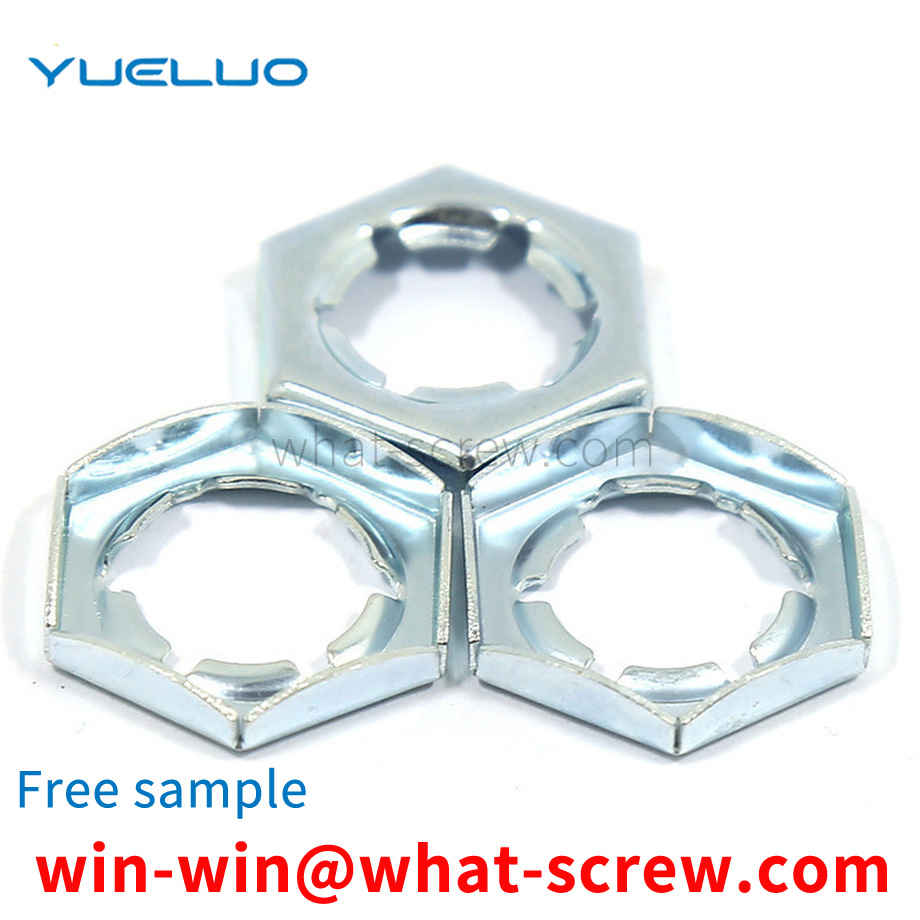
(1) The screw-in performance test is to screw the self-tapping locking screw sample into the test plate until one complete thread completely passes the test without breaking. (2) The destructive torque test is to clamp the stem of the self-tapping locking screw specimen in a thread mold or other device that matches the screw thread, and uses a calibrated torque-measuring device to measure the screw. Torque is applied until fracture, which should not occur in the clamped threaded portion. (3) Carry out a tensile test on the screw sample to check the minimum tensile load for failure. The fracture should be within the length of the rod or the unthreaded thread, and should not occur at the junction of the nail head and the rod. Before the sample breaks, it should be It can reach the minimum tensile load specified by the corresponding performance class. (4) Hydrogen embrittlement is a problem that must be strictly paid attention to in the surface treatment process of self-tapping locking screws. In the pickling process, the screw is stirred in dilute hydrochloric acid, and the amount of hydrogen absorbed by the pickling steel increases linearly with the square root of time and reaches the saturation value. Less than 100%, a large number of hydrogen atoms will be produced, which will be attached to the surface of the screw, resulting in hydrogen infiltration, and the steel will become brittle due to the absorption of hydrogen. The self-tapping locking screw takes 6~8h to drive hydrogen, and the temperature is 160~200℃ (phosphating) and 200~240℃ (electroplating). However, in the production process, the hydrogen drive time should be determined according to many production conditions such as core hardness, surface roughness, electroplating time, coating thickness, pickling time, and acid concentration. It is best to do it before passivation and just after electroplating.
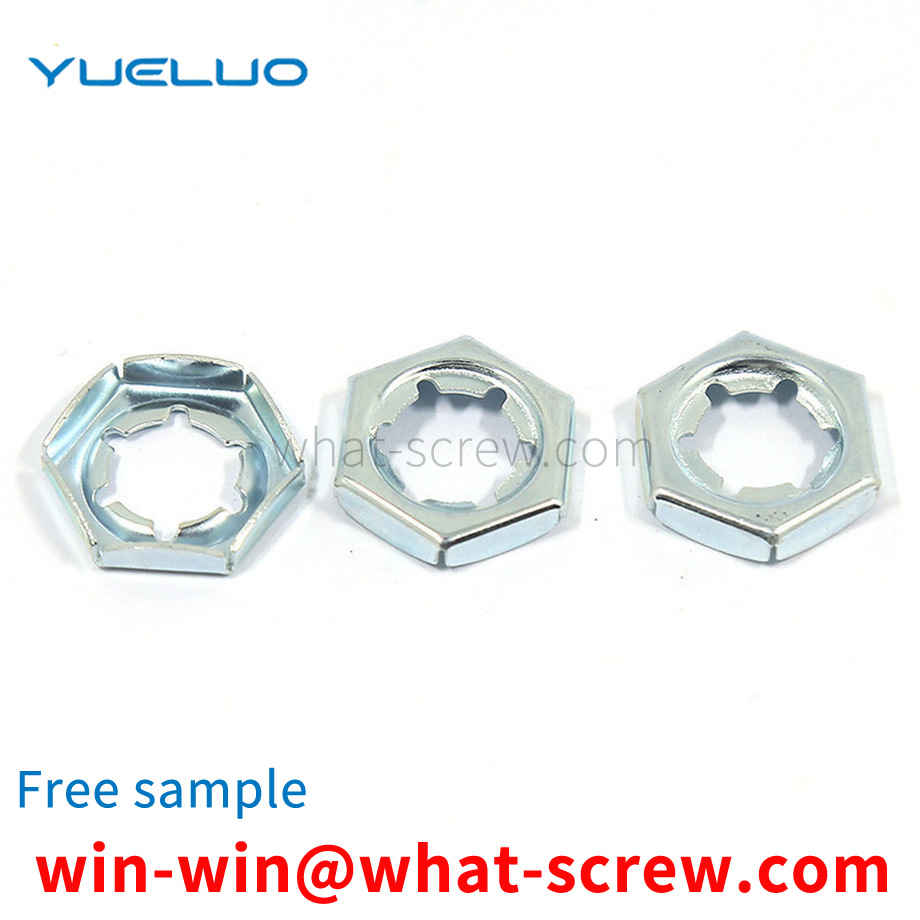
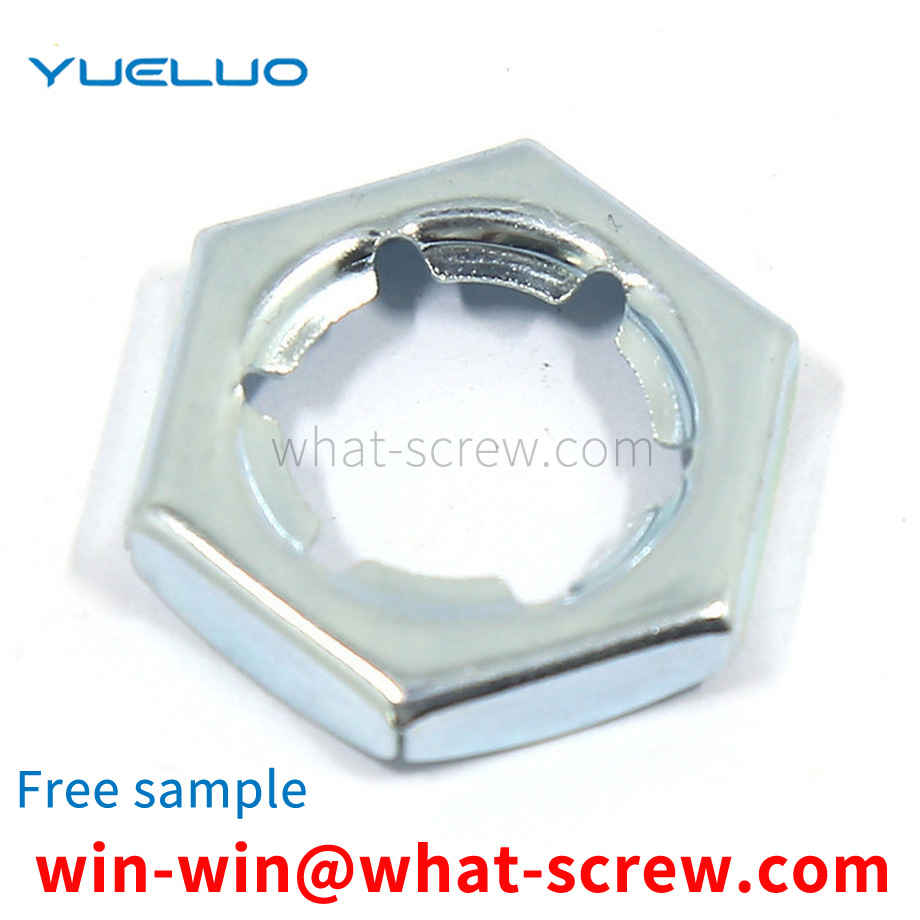
flat washer is also called a flat washer. It is mainly stamped out of an iron plate. The shape is generally a flat washer with a hole in the middle. The size of this hole is generally determined according to customer requirements. There are 9 standards for flat washers in my country. From 2000 to 2002, GB/T97.3-2000, GB/T5286-2001, GB/T95-2002, GB/T96.1-2002, GB/T96.2 were approved and released respectively. -2002, GB/T97.1-2002, GB/T97.2-2002, GB/T97.4-2002 and GB/T5287-2002 Standard for flat washers. According to the performance grade of the flat washer, the author recommends the use of materials: ST12, ST13, Q235, Q215, Q195, etc. can be selected for the 100HV grade, and the surface hardness can reach about 110HV; 08F, 08Al, 10, 10F, etc. can be selected for the 140HV grade etc., the surface hardness can reach about 140HV; for 200HV and 300HV grades, 45, 50, 60, 70 or 65Mn steel should be selected, which can be quenched and tempered by heat treatment to meet the technical requirements of 200~300HV and 300~400HV. Because according to the standard, flat washers of 100HV and 140HV grades can be manufactured from mild steel. Most enterprises use Baosteel materials when selecting materials, which is convenient for cold stamping. The following is a brief description of Baosteel's standards. Compared with the BZJ407-1999 standard, there are major changes in Continuous Cold Rolled Low-Carbon Steel Plates and Strips and the enterprise standard: (1) The grades have been revised and integrated, and the grades have been changed from 8 commonly used to 5. St12 is changed to DC01; ST13 is changed to DC03; St14, St15 is changed to DC04; BSC2 is changed to DC05; St16, St14-T, BSC3 is changed to DC06. (2) The surface quality level is changed from two to three: the higher-level finishing surface (FB), the surface is allowed to have a small amount of defects that do not affect the formability and coating and plating adhesion, such as slight scratches, indentations, Pock, roll printing and oxidation color, etc. Premium Finished Surface (FC) products have no visible defects on the better of the two sides and must meet at least FB requirements on the other side. The super-advanced finishing (FD) product must not have any defects on the better side of the two sides, that is, it cannot affect the appearance quality after painting or the appearance quality after electroplating, and the other side must at least meet the requirements of FB. (3) The surface structure is modified from four to two, and the control value of surface roughness is increased. The average roughness Ra when the surface structure is pitted (D) is 0.6 μm. (4) The provisions on Si and residual elements in the chemical composition of the five grades have been cancelled, and the contents of elements such as C, S, and Alt have been revised.
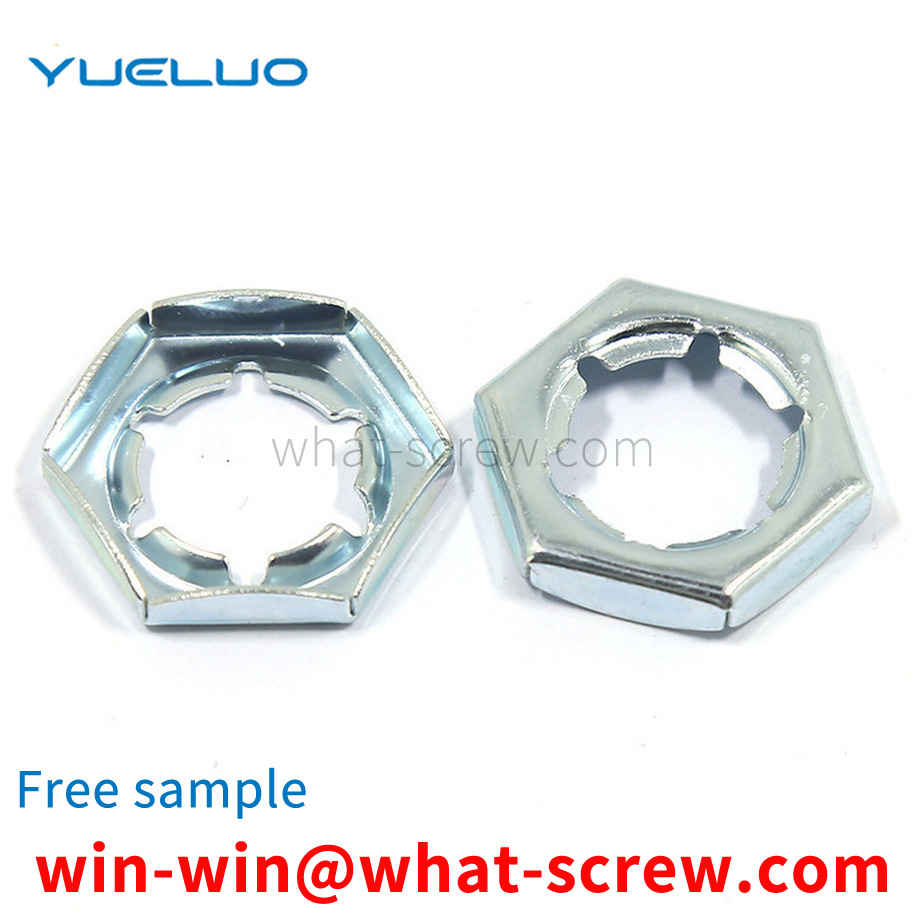
Flat gaskets are usually thin pieces of various shapes used to reduce friction, prevent leakage, isolate, prevent loosening, or distribute pressure. There are such components in many materials and structures. The existing flat washer has a simple structure design. After long-term use, the phenomenon of thinning of the thickness is likely to occur, which in turn leads to poor wear resistance of the flat washer.
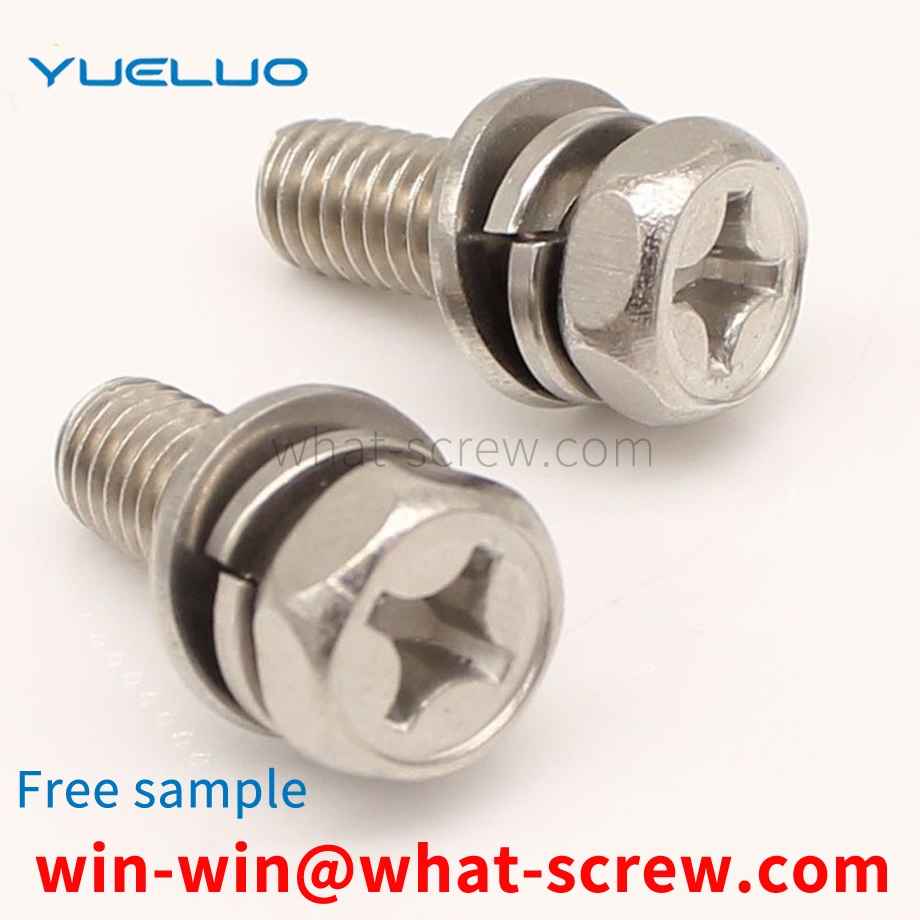
The above content is uploaded by Yueluo or the Internet. If there is any copyright issue, please contact [email protected].

What is the tolerance range of precision screws?

How to choose the right stainless steel screw manufacturer?

Why is there an R angle under the head of the hexagon head s...

We have more than ten years of experience in screw industry ...

We have more than ten years of experience in screw industry ...

We have more than ten years of experience in screw industry ...

We have more than ten years of production experience in the ...